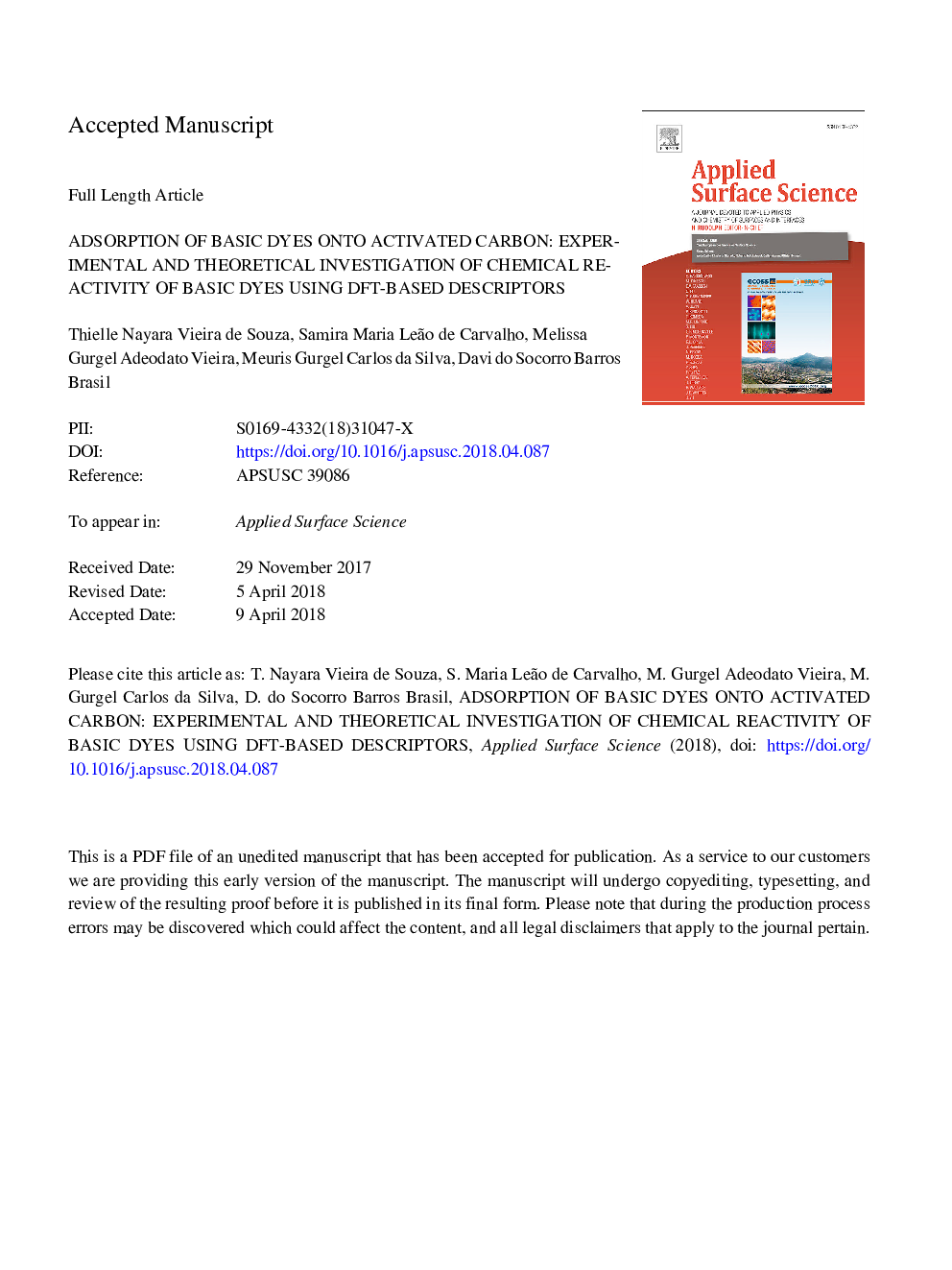| Article ID | Journal | Published Year | Pages | File Type |
|---|---|---|---|---|
| 7833918 | Applied Surface Science | 2018 | 30 Pages |
Abstract
Adsorption of basic dyes, basic blue 26 (BB26), basic green 1 (BG1), basic yellow 2 (BY2) and basic red 1 (BR1) onto activated carbon surfaces were investigated. Activated carbons (ACs) were produced by thermal treatment at 800â¯Â°C, oxidation with HNO3 6â¯M and chemical activation with H3PO4 at 450â¯Â°C and açaà seeds (Euterpe oleracea) and Brazil nut shells (Bertholletia excelsa) were used as precursors. ACs were characterized by X-ray diffraction spectroscopy (XRD), Fourier transform infrared spectroscopy (FTIR), analysis (TGA/DTA), N2-adsorption at 77â¯K, mercury intrusion porosimetry, evaluation of acidity/basicity, and determination of the point of zero charge (pHpzc). The molecular chemical reactivity of the dye molecules was investigated using the DFT-based reactivity descriptors, electrophilicity index (É·), chemical potential (μ) and chemical hardness (η), values were approximated in terms of the frontier molecular orbital energies, HOMO and LUMO. ACs produced by activation with H3PO4 were more effectives to remover the dyes tested, performances attributed to their pore structure and surface functional groups. The experimental and theoretical results of chemical reactivity show that BG1 and BB26 dyes are more reactive than BR1 and BY2 dyes.
Keywords
Related Topics
Physical Sciences and Engineering
Chemistry
Physical and Theoretical Chemistry
Authors
Thielle Nayara Vieira de Souza, Samira Maria Leão de Carvalho, Melissa Gurgel Adeodato Vieira, Meuris Gurgel Carlos da Silva, Davi do Socorro Barros Brasil,
